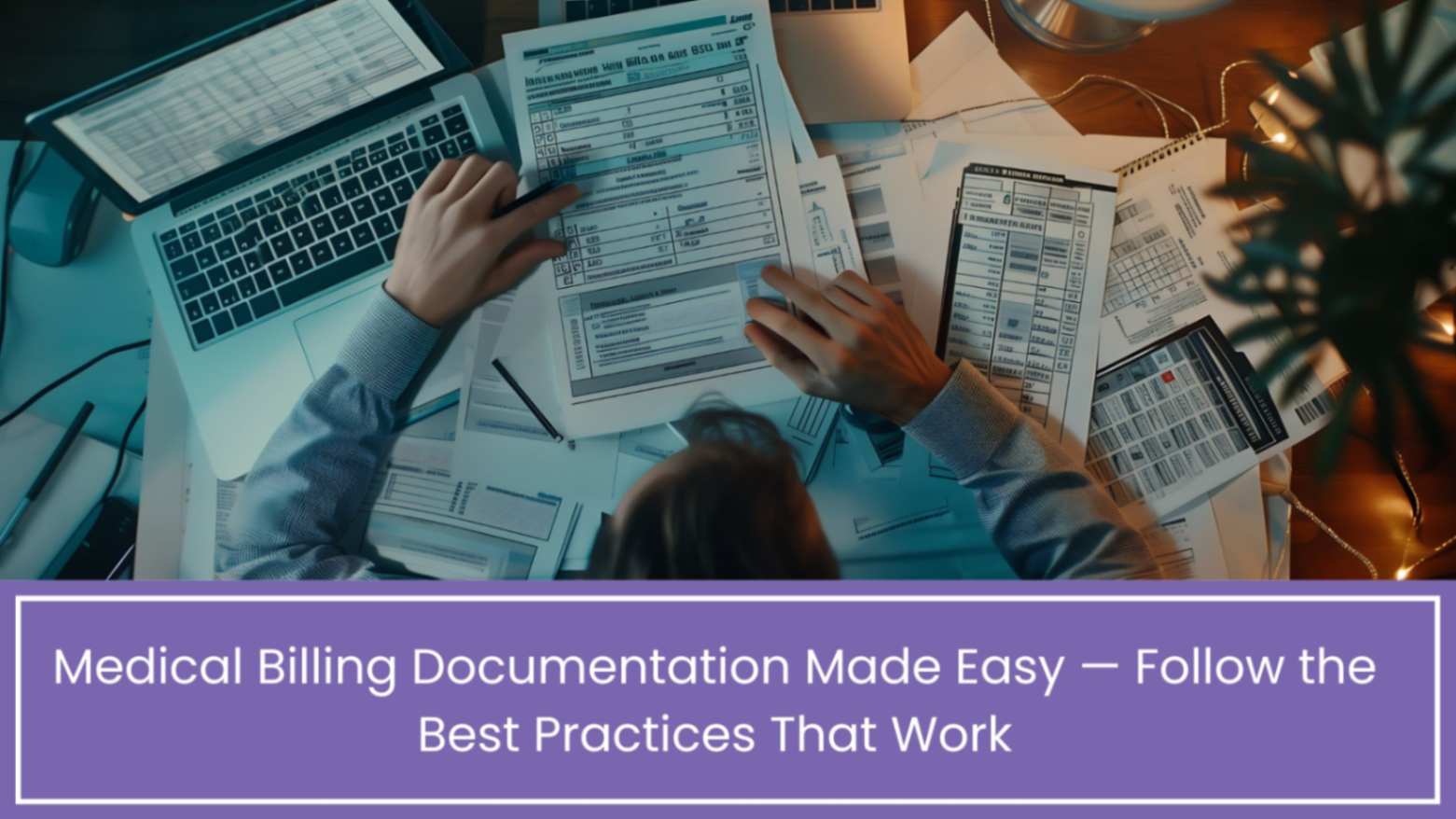Different Types of Medical Virtual Assistants
For many healthcare practices the question “Different types of medical virtual Assistants?” is becoming more common. These remote professionals can handle everything from scheduling and billing to clinical documentation and patient follow-ups. In this guide, we break down the main categories of medical VAs – from administrative receptionists and insurance billers to specialized scribes and patient coordinators. You’ll learn what each type of virtual assistant actually does, which tasks they perform, and how to choose the right Medical Assistant for your clinic or hospital. Understanding these types of medical virtual assistants ensures your practice can boost efficiency and patient care.
Table of Contents
Top 7 Specialized Medical Virtual Assistants You Can Hire in 2025
- Virtual Medical Receptionist: Acts as the front desk for your practice, managing incoming calls, appointment scheduling and patient intake forms. A trained VMA receptionist is often the first point of contact for patients.
- Virtual Medical Scribe: Joins telehealth or in-office visits remotely to document the encounter in the electronic health record (EHR). Doctors dictate notes and the scribe ensures accurate documentation. (HelloRache notes that virtual scribes expertly track doctor-patient interactions and manage EHRs.) .
- Virtual Billing Specialist: Handles claims submission, insurance verification and payment posting to maximize revenue. A Virtual Assistant biller reviews outstanding accounts and follows up on unpaid claims.Hiring a medical biller Virtual Assistant can cut costs and reduce errors in billing, as they are trained in healthcare billing systems.
- Virtual Medical Coder: Focused on coding clinical notes for insurance claims. A coding VA applies CPT/ICD codes to patient encounters so claims are reimbursed properly. This role often works closely with billing VAs to streamline the revenue cycle. (CoreVirtual lists “Medical or Dental Coder” as a distinct VMA type.) .
- Telehealth/Patient Coordinator: Manages virtual care logistics. These VAs handle appointment reminders, tech support for telemedicine sessions, and follow-up calls. They may also monitor remote patient data (e.g. from wearable devices) to alert providers of issues. (Aristo Sourcing notes VMAs provide reminders and follow-ups and even monitor high-volume tasks like telehealth scheduling .)
- General Virtual Medical Assistant: A flexible admin assistant trained across tasks. This type can handle email, paperwork, managing EHR entries, and clinic communications. CoreVirtual specifically lists a “General Virtual Assistant” for medical practices, highlighting that some Assistants are cross-trained in multiple areas .
- Specialized Clinical Virtual Assistants: These assistants focus on particular specialties. For example, a Virtual OB/GYN Assistant schedules prenatal visits, tracks lab results, and educates patients on birth plans . A Geriatrics/Chronic Care VA might handle prescription refills and check on elderly patients. (HelloRache notes roles like OB-GYN VA and rheumatology VA exist, handling specialty-specific tasks .) A Virtual Rheumatology Assistant, for instance, might manage appointments and patient education for arthritis clinics. By 2025, many practices will hire such specialty-trained VMAs who seamlessly handle niche workflows .
Types of Medical Virtual Assistants and What They Do
Medical Virtual Assistants fall broadly into clinical vs. administrative categories, and into human vs. AI assistants. Human VMAs are usually licensed medical professionals (like nurses or medical assistants) who work remotely . They handle non-direct-care tasks: administrative assistants manage calls, insurance verifications, and records, while clinical VAs (e.g. scribes or triage VAs) assist with documentation and patient communication. AI-powered virtual assistants (chatbots/voice agents) may automate patient outreach or FAQs. All VMAs must be HIPAA-trained and proficient with EHR systems; practices now expect VAs to integrate with systems like Epic or Cerner and maintain data security .
In practice, Healthcare Virtual Assistant roles often overlap a single assistant might handle a mix of duties. Core Virtual Solutions outlines common Virtual Healthcare A job titles, noting each has a
focus :
- Receptionist/Administrator: Manages front-desk tasks (calls, scheduling, referrals).
- Patient Care Coordinator: Oversees patient intake and follow-ups.
- Telephone Triage Assistant: Screens patient calls and routes them appropriately.
- Remote Patient Monitoring VA: Checks on high-risk patients via telehealth, noting concerns.
- Virtual Scribe: Documents physician-patient interactions in real time.
- Medical Transcriptionist: Converts recorded dictation into written records.
- Medical Biller/Coder: Handles insurance claims and coding for reimbursement.
Each type of assistant handles a different part of the workflow. For example, a billing VMA focuses exclusively on coding and claim submission, whereas a reception VMA deals with front-office flow . As one source explains, “VMAs can automate high-volume tasks like billing, scheduling, and insurance verification, cutting labor costs and minimizing errors” .
Which Type of Medical Virtual Assistant Does Your Practice Need?
Choosing the right VMA depends on your practice’s size and specialty. Small clinics often start with a virtual receptionist to offload front-desk work, and may add a general VMA who can multitask across admin duties . Specialty practices (like cardiology or pediatrics) might hire a clinical scribe or medical coder familiar with that field. The Practolytics task chart suggests tagging tasks as “in-house” or “virtual” – e.g., purely digital tasks like data entry, chart prep or prior authorizations can be assigned to a VMA .
A good approach is to audit your workflow: which tasks are repetitive or clerical? Those are prime for a VMA. Many practices find hiring 2–3 specialized VAs (e.g. one for billing/coding and one for patient coordination) provides the best efficiency. As CoreVirtual notes, a patient care coordinator VA can “prioritize patient intakes, laboratory exams, and aftercare,” while triage VAs handle follow-up calls and medical queries . By matching specific VMA skills to your bottlenecks, your practice pays only for the expertise it needs.
Virtual medical assistants are used in many workflows – from in-home telehealth to busy clinics. They can handle anything from patient check-ins to telemonitoring. For example, telehealth VAs will ensure patients have technical support and reminders for virtual visits.
From Billing to Patient Support: Medical VAs for Every Task
Medical VMAs cover the full spectrum of back-office and patient-facing tasks. On the revenue side, billing and coding VAs process claims and insurance forms to improve cash flow. They make sure every patient visit is properly documented and coded, reducing lost revenue. On the clinical side, administrative VAs keep the day running smoothly: they answer patient calls, enter chart notes, verify insurance benefits, and follow up on test results. As one industry guide notes, VMAs “handle various tasks including scheduling appointments, managing social media, billing, and freeing up doctors’ time to focus on patients” . Even marketing tasks or EMR implementation projects are increasingly outsourced to VAs who understand healthcare.
VMAs can also improve patient communication and support. A patient navigator VA might call to explain lab results or coordinate referrals, while a telephone triage VA can field after-hours patient questions. Practices report that by assigning routine calls and reminders to VAs, clinicians spend more time on care. For example, a 2025 case study showed that adding a 24/7 AI appointment assistant increased online bookings by 47% at a large hospital . In short, VMAs aren’t limited to one niche – from billing desks to telehealth help lines, there is a VMA suited to every administrative and patient-service task.
In a hospital setting, virtual assistants may assist specialist teams (e.g. by reviewing imaging reports or preparing discharge summaries). In clinics, they often focus on general workflows like scheduling and documentation .
Different Roles of Virtual Medical Assistants in Clinics vs Hospitals
The role of a VMA often depends on the setting. In smaller clinics or private practices, a single VMA might wear many hats – handling phone scheduling in the morning, chart prep midday, and follow-up calls in the afternoon. In contrast, large hospitals or health systems deploy VMAs to support specific departments or rounds of care. For instance, a hospital VMA team might include virtual intake assistants for the ER, coding specialists for each specialty, and remote chart reviewers for inpatient units. These VMAs integrate with hospital EHRs and work alongside on-site staff.
The tasks can differ: outpatient clinics typically need VAs for appointment management, patient education and billing follow-ups. Inpatient or hospital settings, VMAs might help with discharge planning calls, insurance pre-authorizations, or lab result monitoring. Practolytics highlights that specialty-trained VMAs can seem “seamless” – for example, a dermatology VA handling cosmetic procedure follow-ups , or a physical therapy VMA tracking missed sessions and exercise plans . Hospitals also emphasize 24/7 availability and multilingual support; nearly 70% of patients now trust AI assistants for reminders and inquiries .
Ultimately, clinics get flexibility and cost savings: Aristo Sourcing reports that a full-time VMA can cost a fraction of an in-office medical assistant (often saving ~60% in overhead) . Hospitals benefit from scaling support across units. In both cases, VMAs “run the business behind the scenes,” ensuring “patients spend less time waiting and more time with their doctor” .
A Breakdown of Medical Virtual Assistants by Department
Healthcare departments often need their own style of VA support. For example: Primary Care: VAs handle patient intake forms, chronic care management calls, and routine labs coordination. Surgical Practices: Pre-op/post-op instructions, scheduling follow-ups, and collecting patient history can be managed remotely. Mental Health: A behavioral health VMA might manage secure messaging, appointment reminders, and intake consents . Physical Therapy: A PT-specific VMA tracks home exercise compliance and reschedules missed visits . OB/GYN: As noted, VAs coordinate prenatal scheduling and lab tracking . The Practolytics chart shows that clinics like OB/GYN, PT, and behavioral health actively train VMAs for these niche tasks .
Even administrative “departments” have virtual roles. A Virtual Health IT Coordinator might help implement a new EMR off-site, while a Virtual Insurance Specialist verifies benefits for new patients. In larger practices, one may hire multiple VMAs – e.g. a front-office VA for scheduling, a billing VA for claims, and a patient-care VA for calls. By mapping VMA skills to department needs, practices avoid wasting staff time. For example, a dermatology clinic brought on a virtual VA to handle chart prep and saw front-desk hold times drop 40% .
Medical Virtual Assistant Job Titles Explained: What They Actually Do
Below are common medical VA job titles and their typical duties:
- Medical Receptionist / Front-Desk Virtual Assistant: Answers phones, greets patients (virtually), schedules/cancels appointments, verifies insurance and enters patient info into the EHR . Often also makes follow-up reminder calls.
- Medical or Dental Virtual Assistant: A catch-all administrative VA, handling tasks like paperwork, data entry, phone triage, and basic billing. CoreVirtual lists this as a distinct category .
- Patient Care Coordinator: Prioritizes patient intake steps and coordinates lab tests or referrals. They may call patients to explain results or treatment plans. These VAs “ensure continuity” in care and follow-ups .
- Telephone Triage Assistant: Screens symptom calls, provides basic guidance (under protocols), and escalates urgent issues to providers. They also schedule callbacks or signpost patients to the right provider.
- Remote Patient Monitoring Assistant: Checks in on patients via phone or digital tools (especially those with chronic illness or post-op). They track vital signs/inputs (like glucose logs) and notify the medical team if problems arise. This role is growing with telehealth.
- Medical Virtual Scribe: Joins patient visits (in-person or virtual) to document history, exam findings and doctor’s notes into the EHR in real time . This frees physicians from charting, improving note quality and efficiency.
- Medical Transcriptionist: Listens to recorded dictations and converts them into written records. While less common than live scribing, transcriptionist VAs still serve practices that use recorded notes.
- Medical Biller: Processes patient claims and bills insurance/ patients for services rendered. They handle denied claims re-submission and patient billing inquiries. (HelloRache explicitly cites virtual billers as a common VMA role .)
- Medical Coder: Assigns CPT and ICD codes to diagnoses, procedures, and supplies so that billing is accurate. A coding VA works closely with billers to ensure no revenue is lost to miscoding. (CoreVirtual lists “Medical or Dental Coder” .)
Each title reflects the VA’s specialty. For example, a “Virtual OB-GYN Assistant” is often a registered nurse or medical assistant trained in women’s health – she manages pregnancy schedules and patient education. A “Virtual Geriatric Assistant” may have experience with elder care coordination. By clearly defining these titles, practices ensure the VA has the right training. As one guide notes, VMAs are typically licensed health professionals skilled in coding, billing and documentation , so job titles often signal required experience.
What tasks can a medical virtual assistant handle?
Medical VMAs can take on a wide range of administrative duties: answering phones, scheduling appointments, entering data, verifying insurance, managing billing and claims, and handling patient follow-ups . Clinically-trained VAs can also document visits (as scribes), prepare charts or assist with telehealth reminders. In short, if it’s done at a desk or over the phone, a qualified VMA can usually do it.
Are VMAs replacing doctors or nurses?
Virtual Healthcare Assistant does not diagnose, prescribe, or provide clinical treatment . They are helpers, not replacements. In fact, they free up clinicians’ time. As one medical director put it, VMAs handle repetitive tasks so doctors can “focus on what [they] trained for—care and connection” . VMAs support the healthcare team, improving efficiency without substituting for professional medical judgment.
Can one Virtual Medical Assistant work for multiple doctors or clinics?
Yes. Many VMAs work on a team that serves several providers. A single VMA can split their schedule among multiple doctors’ offices or telehealth programs . Aristo Sourcing explains that VMAs often work with a supporting team, allowing them to handle tasks for several clients simultaneously. This flexibility is a benefit for smaller practices that can share VMA resources rather than hire full-time staff.
What qualifications should a Medical Virtual Assistant have?
Ideally, a medical VMA is a trained healthcare professional (like a nurse, medical assistant, or coding specialist) with experience in clinical workflows . They should be HIPAA-certified, proficient in your practice’s EHR software, and skilled in medical terminology. Many VMAs have backgrounds in coding/billing or allied health. Check that they understand your specialty: for example, an OB-GYN clinic’s VMA should know maternity protocols. Ultimately, the right VMA fits your needs – whether it’s an administrative assistant, a triage nurse, or a remote patient monitor.
How do Virtual Healthcare Assistant charge and save money?
VMAs are usually contract or hourly hires, billed monthly. You avoid costs of benefits, office space and full-time salaries. According to industry data, switching to VMAs can cut overhead dramatically – one clinic noted 60% savings on staffing costs . Many practices report being able to pay a flat monthly fee to a VMA service and only pay for the hours used. Given the growing demand (up 35% in 2024) , hiring a VMA is often more cost-effective than an in-office hire.
Conclusion:
Medical virtual assistants come in many forms – from virtual receptionists and scribes to billing specialists and patient care coordinators. Each type of VMA is trained for specific tasks in your practice. For example, a virtual medical receptionist handles calls and bookings, a virtual scribe documents doctor visits, and a virtual biller/coder processes insurance claims . Specialized VAs (like OB/GYN or geriatrics assistants) serve particular departments . By understanding the different VMA roles, healthcare providers can match the right assistants to their needs. The result is streamlined operations – VAs manage scheduling, records and follow-ups – so clinics and hospitals improve efficiency and patient care without adding on-site staff.
Read More – From Chaos to Efficiency: A Small Practice’s Journey with a Virtual Assistant






